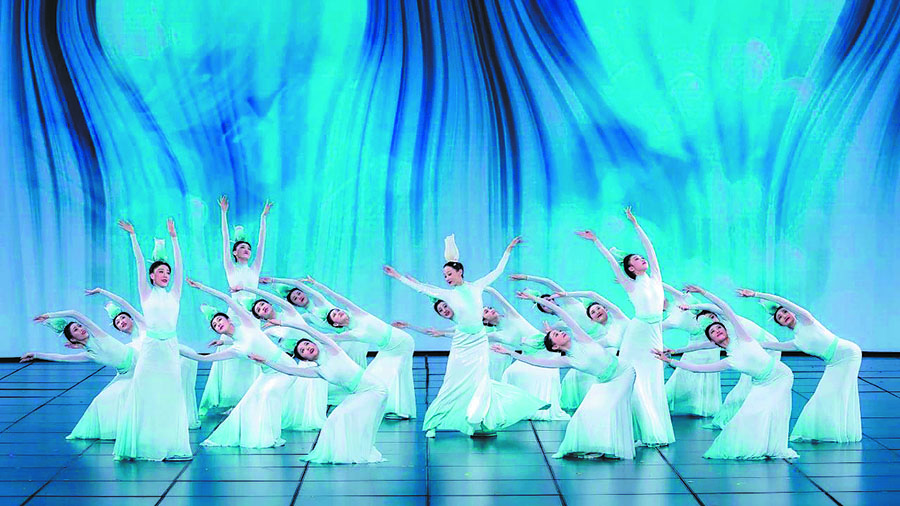

Qingbai porcelain, renowned for its ethereal blue-green hues and subtle motifs, reflects the artistic sensibilities of ancient China. With its origins traced to the Song Dynasty, this porcelain was crafted with meticulous attention to detail, embodying a blend of simplicity and sophistication. Qingbai porcelain was widely produced in most parts of southern China, especially Jingdezhen in East China's Jiangxi province. As one of the first varieties of porcelain, it laid a technical foundation for the development of others, including Qinghua, blue-and-white porcelain.
"Since 2022, we made several trips to Jingdezhen, which is a popular tourist destination now. Amid the bustling workshops and ancient kilns, we delved deep into the techniques and traditions that gave birth to Qingbai porcelain by visiting museums and talking to craftsmen. We studied the intricate process of glazing, the art of kiln-firing, and the cultural significance embedded in every brush stroke of the porcelain's designs," says the director, Yi Jie, adding that the dance drama inspired by Qingbai porcelain is more than a performance, but "a celebration of art and history intertwined".
"Central to the creation of the dance drama is a profound homage to the spirit of Song Dynasty artisans," adds Yi.
The dance drama is set against the backdrop of Song Dynasty, telling a story about a young man, who travels from northern to southern China to learn the skills of making Qingbai porcelain. As he finally settles down in Jingdezhen, he not only becomes a skilled artisan but decides to stay, preserve and spread the cultural legacy.
"When we visited Jingdezhen for field research, we noticed that many porcelain artisans had no fingerprints due to the constant handling of clay. Fingerprints are unique biological identifiers, and repeated exposure to the clay wears them away. These artisans infuse their lives into the porcelain they create. Therefore, I believe that porcelain works bear the marks of the artisans' lives," Yi says.
"I can still recall vividly that we went to a very old kiln and saw pieces of Qingbai porcelain which were over 1,000 years old. It was the moment that we had a time-travel experience, which was very inspiring," adds Li Li, the dance drama's artistic director, noting that the old kiln is closed to the public for protection and opened to the creative team of the dance drama with limited hours.
"We were very honored to enter the kiln, which allowed us to feel and imagine those craftsmen, who were revered for their dedication, patience, and mastery of porcelain-making techniques. They infused their creations with a spirit of innovation and elegance, striving to capture the essence of natural beauty in every piece. The dance drama pays tribute to their craftsmanship by embodying the same spirit of meticulousness and reverence for tradition."